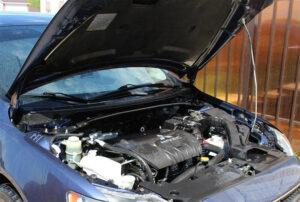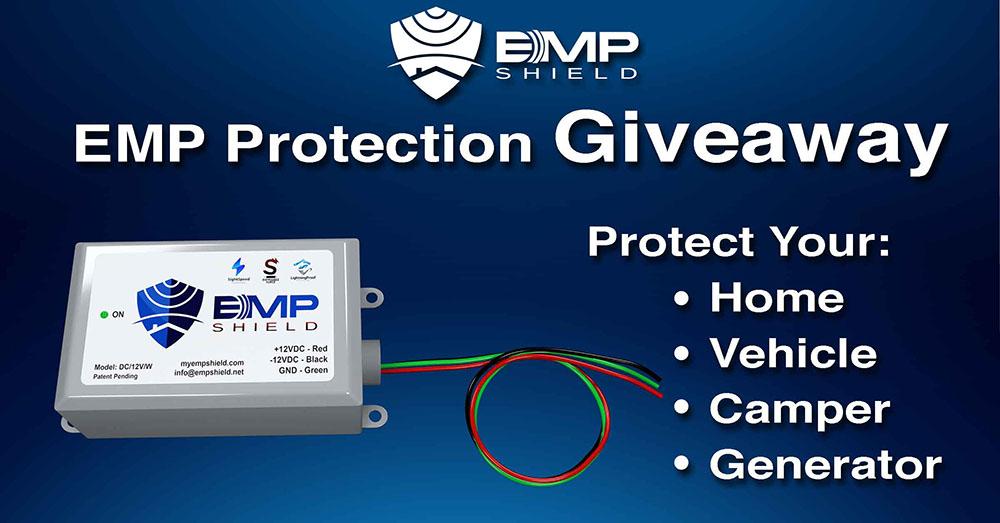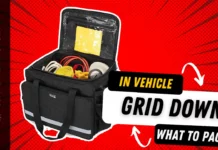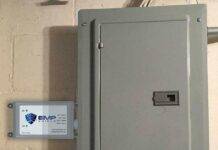
How effective are EMP shields?
What are the advantages and disadvantages of installing one? Why should you install one? If you’re concerned about EMP vehicle or home protection and want to learn more about how an EMP shield works, this guide on how to create an EMP shield will provide the answers you need.
What is an EMP?
An EMP, or electromagnetic pulse, is a high-intensity burst of electromagnetic radiation. This can be caused by a nuclear explosion, solar flare, or man-made EMP device. An EMP can damage or destroy electronic equipment, causing widespread blackouts and loss of communication. EMP protection is important for critical infrastructure, such as power plants and hospitals. There are many ways to protect against EMPs, including EMP shielding.
EMP shielding is a process of protecting electronic equipment from the effects of an EMP. This can be done by using Faraday cages, surge protectors, or power filters.
Important factors to consider
- Know what you need to protect. EMP protection starts with knowing what electronics are most vulnerable.
- Use tested products already available on the market, like EMP Shield
- Find the right materials.
- Use multiple layers of protection.
- Consider a Faraday cage.
- Protect your data backups.
- Have a plan B for power outages.
- Stay informed about EMP threats by following the EMP Commission and North American Aerospace Defense Command (NORAD) on Twitter.
 Know what you need to protect. Since EMP protection is a last line of defense against a wide range of harmful effects, you may want to consider protecting only those items that are most vital for your family’s survival and well-being. This can include items such as refrigerators and freezers, televisions, radios, fire alarms, wireless routers and phones with backup batteries (for emergency calls), flashlights with lithium batteries or solar power adapters, portable generators with fuel reserves (for use when power outages occur), medical devices like heart rate monitors or blood glucose meters that don’t require electricity to function properly but are still vulnerable to EMP attacks.
Know what you need to protect. Since EMP protection is a last line of defense against a wide range of harmful effects, you may want to consider protecting only those items that are most vital for your family’s survival and well-being. This can include items such as refrigerators and freezers, televisions, radios, fire alarms, wireless routers and phones with backup batteries (for emergency calls), flashlights with lithium batteries or solar power adapters, portable generators with fuel reserves (for use when power outages occur), medical devices like heart rate monitors or blood glucose meters that don’t require electricity to function properly but are still vulnerable to EMP attacks.
What type of materials are required for an EMP shield?
EMP protection starts with understanding what materials are needed. The most important item is a Faraday cage. This is a conductive enclosure that protects against electromagnetic fields. You’ll also need shielding tape and gaskets, as well as non-conductive window film. With these materials, you can create a safe space for your electronics during an EMP event.
Take an old box or buy one from a hardware store. Place your devices inside, then cover them with shielding tape. Gasket the edges of the box to make sure it stays closed. Next, take some of the faraday cage material and cover all six sides of the box except for one side where you will cut out a square opening just big enough for wires or cables to enter. Seal up this opening with more gasketing and then add two pieces of window film over top so that any electronic signals cannot get through. If you do not have a window, try using masking tape. Close the box and now wrap the whole thing in shielding tape to seal it tight. That’s it! Now you have created your own EMP shield that should protect your electronics if there ever is an emergency situation.
 Tools Needed for Creating An EMP Shield
Tools Needed for Creating An EMP Shield
A Faraday cage is the most common way to protect against EMP. This can be as simple as a metal garbage can lined with cardboard, or something more elaborate like a metal storage shed. But if you want to be really prepared, you should have a Faraday cage for each of your electronics.
Other tools you’ll need include:
- A power drill and bits (to punch holes in the card board)
- Staples and a staple gun (to seal holes)
- Sheet of thin wood (to build frame)
- Nails and hammer (to assemble frame)
- Ruler or straight edge ruler (to measure distances) -Paintbrush (for applying paint)
- Wire cutters or wire strippers (to strip insulation from wires)
- Glue gun and glue sticks (to assemble wires inside a hole)
- Hot glue stick, heavy duty glue stick, or hot melt adhesive sticks (as needed for securing wires to the inside of the shield)
- Black spray paint or textured spray paint (to cover the outside of the shield)
- Metal mesh screening material or a window screen (optional but helpful). The mesh should not exceed one inch square; it will take up too much space on your faraday cage. You could also use clear plastic sheeting instead of metal mesh, but this is not recommended because it does not allow you to see through it when there are any issues with your electronics.
You may find that many of these materials are available at a hardware store near you, such as Home Depot or Lowe’s. However, I would recommend that you purchase some pre-cut pieces of galvanized steel sheeting before they sell out!
Precautions While Working with Electronic Components
We have put together some basic common sense precautions to follow when working with any type of electrical component.
- Don’t work on electronic components while they are powered on.
- If you must work on electronic components while they are powered on, use a ground strap to avoid static discharge.
- Be aware of your surroundings and make sure that there is no flammable material near you.
- Work in a well-ventilated area to avoid inhaling fumes from soldering or other chemicals.
- Keep a fire extinguisher nearby in case of accidents.
- Follow the manufacturer’s instructions when working with electronic components.
- Disconnect all power sources before working on any electronic components.
- Make sure that there is enough room around you for any accidental sparks to safely dissipate.
- Make sure not to wear anything which could catch fire easily (wool sweaters, nylon jackets, etc.).
- Don’t work alone if possible; have someone nearby in case something goes wrong or if you need help with something.
- Know how to turn off power at the circuit breaker or switchboard if necessary – not just at the component being worked on!
- Never touch anything metal until it has been grounded by touching it to something else like a water pipe or electrical outlet grounding screw which has been turned off first (don’t forget!). The connection between the two items should be good for at least 15 seconds.
- Put down a non-flammable mat as protection against small spills or leaks which might occur during soldering operations.
- When finished working on electronic components, disconnect them from their power source and then put them away so that they don’t come into contact with each other accidentally later on and cause short circuits.
- If you think that the piece of equipment is damaged beyond repair, unplug it from its power source and leave it disconnected for at least five minutes before approaching again.
- Always take care to maintain safety precautions in order to protect yourself from injury or worse!
- Test your project before leaving it unattended – see if everything works as expected without coming into contact with any other electronics or live wires.
Tips To Make The Project Simple
As with any DIY project, the key to success is taking your time, understanding what it is you are creating, and keeping that knowledge filed for future projects. In closing, here are a few more tips for keeping things simple:
- Start with a small, basic project. A good entry-level project is to create a Faraday cage.
- Follow instructions carefully. This is not a time to get creative; you want to make sure you’re doing things correctly so your device will be protected.
- Choose the right materials. Conductive materials are key for blocking electromagnetic fields, so make sure you use those.
- Pay attention to the details. The smaller the gaps in your cage, the better protected your device will be.
- Test it out. Once you’ve built your cage, test it out with a known EM source like a CRT TV or microwave oven (turned off, of course).
- Make adjustments as needed. After testing your shield, if you notice that certain parts of your device were exposed and unprotected, go back and reinforce those parts with more metal or another material. After that’s done, take it back out and do another test run.
If all goes well this time around, congratulations! You have successfully created an EMP shield.
EMP shielding is just one important thing you need to know in the event of EMP or Nuclear event. Learn more about what to do in the event of a Nuclear Explosion.





















